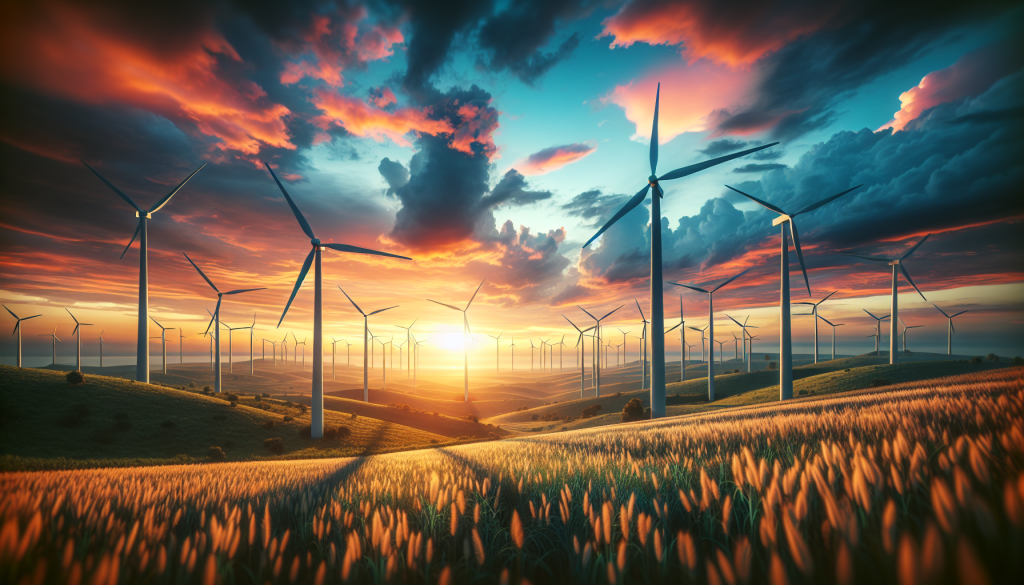February 7th, 2025
|
Share with
The Future of Renewable Energy Systems Transforming Our World
In the face of growing climate concerns, the transformation of our energy systems has become imperative. As the global demand for energy continues to rise, there is an increasing need for sustainable solutions that not only meet this demand but also minimize environmental impact. The future of renewable energy is pivotal in this transformation, with alternative energy types playing a crucial role in shaping a sustainable future.
Harnessing the Power of Nature: Alternative Energy Types
Alternative energy sources, often synonymous with renewable energy, are derived from natural processes that are replenished constantly. These include solar, wind, hydroelectric, biomass, geothermal, and tidal energy. Each of these energy types offers unique benefits and challenges, but collectively, they represent a major shift away from fossil fuels.
- Solar Energy: The Endless Resource Solar energy captures sunlight and converts it into electricity using photovoltaic cells. As one of the most abundant energy sources on earth, solar power is championed for its potential to significantly reduce greenhouse gas emissions. With advancements in solar technology, efficiency has dramatically improved, making it a more viable option for widespread use. As governments and companies continue to invest in solar infrastructure, its role in global energy systems is set to expand exponentially.
- Wind Energy: Harnessing the Skies Wind energy is generated through wind turbines that convert kinetic energy from wind into electricity. Wind farms, both onshore and offshore, have become increasingly prevalent due to their ability to produce large quantities of clean energy. While wind energy offers remarkable benefits, such as low operating costs and high energy output, its effectiveness is contingent upon geographical locations with consistent wind patterns.
- Hydroelectric Power: The Flowing Giant Hydropower utilizes the energy of flowing water, typically from rivers or dams, to generate electricity. It is one of the oldest and most established forms of renewable energy, providing a stable and reliable power supply. However, the environmental impact of large-scale hydroelectric projects, such as habitat disruption, remains a topic of discussion. As a result, small-scale hydro projects are being considered as alternative solutions with less ecological impact.
- Biomass Energy: Organic Matter with Potential Biomass energy is produced by burning organic matter, such as plant materials and animal waste. It serves as a versatile energy source, capable of generating electricity, producing heat, and powering transportation fuels in the form of biofuels. The advantage of biomass lies in its ability to utilize waste products, thus reducing landfill use. However, sustainable sourcing and management of biomass resources are crucial to prevent deforestation and food security issues.
- Geothermal Energy: The Earth’s Heat Geothermal energy is derived from the earth’s internal heat, harnessed through wells or other methods to produce electricity and provide direct heating. This form of energy is both reliable and efficient, offering continuous power generation regardless of weather conditions. The geographical limitation is a primary challenge for geothermal energy, with its potential best realized in regions with high tectonic activity.
- Tidal Energy: The Ocean’s Rhythm Tidal energy leverages the natural rise and fall of ocean tides to generate electricity. This type of energy is highly predictable, not subject to the variability seen in other renewable sources. The development of tidal barrages and underwater turbines has opened new avenues for this promising energy type. Nonetheless, the high initial costs and potential ecological impacts pose significant hurdles for widespread deployment.
The Ecosystem of Change: Integrating Alternative Energy Types
The future of renewable energy doesn’t rest on a single solution but rather a combination of alternative energy types tailored to local conditions. A diversified energy mix can increase resilience and help mitigate the limitations inherent in individual energy sources. For instance, regions with abundant sunlight might prioritize solar energy, while coastal areas could exploit wind and tidal energies.
Technological innovation and policy support are integral to achieving this transition. Investment in research and development will continue to drive efficiencies and cost reductions, making renewable energy more accessible. Additionally, government policies that incentivize the adoption of renewable energy and disincentivize fossil fuels will be critical in accelerating this shift.
Moving Towards a Sustainable Future
The transformation towards a predominantly renewable energy system is paramount to combating climate change and ensuring a sustainable future. While the challenges are significant, the potential benefits—reduction in carbon emissions, energy security, and economic opportunities—are even greater. By embracing alternative energy types, the world can create a cleaner, more resilient energy landscape that supports both environmental and economic sustainability.
In conclusion, the future of renewable energy systems lies in the harnessing of these diverse alternative energy types. As society continues to innovate and integrate these systems into our daily lives, the transformation towards a sustainable and environmentally-friendly world becomes increasingly tangible. The journey is complex, but the pursuit is undoubtedly worth the effort for a brighter, cleaner future.
